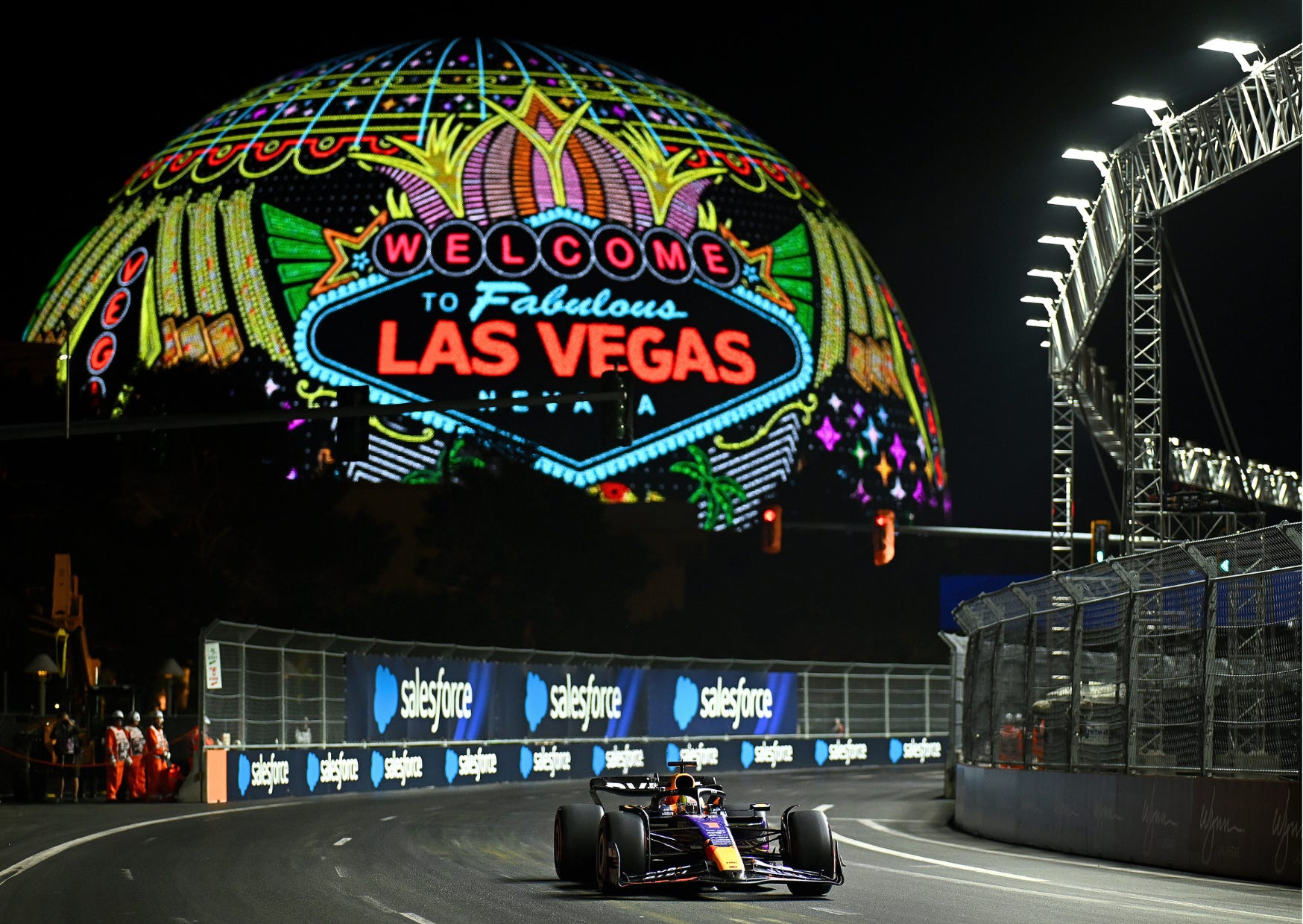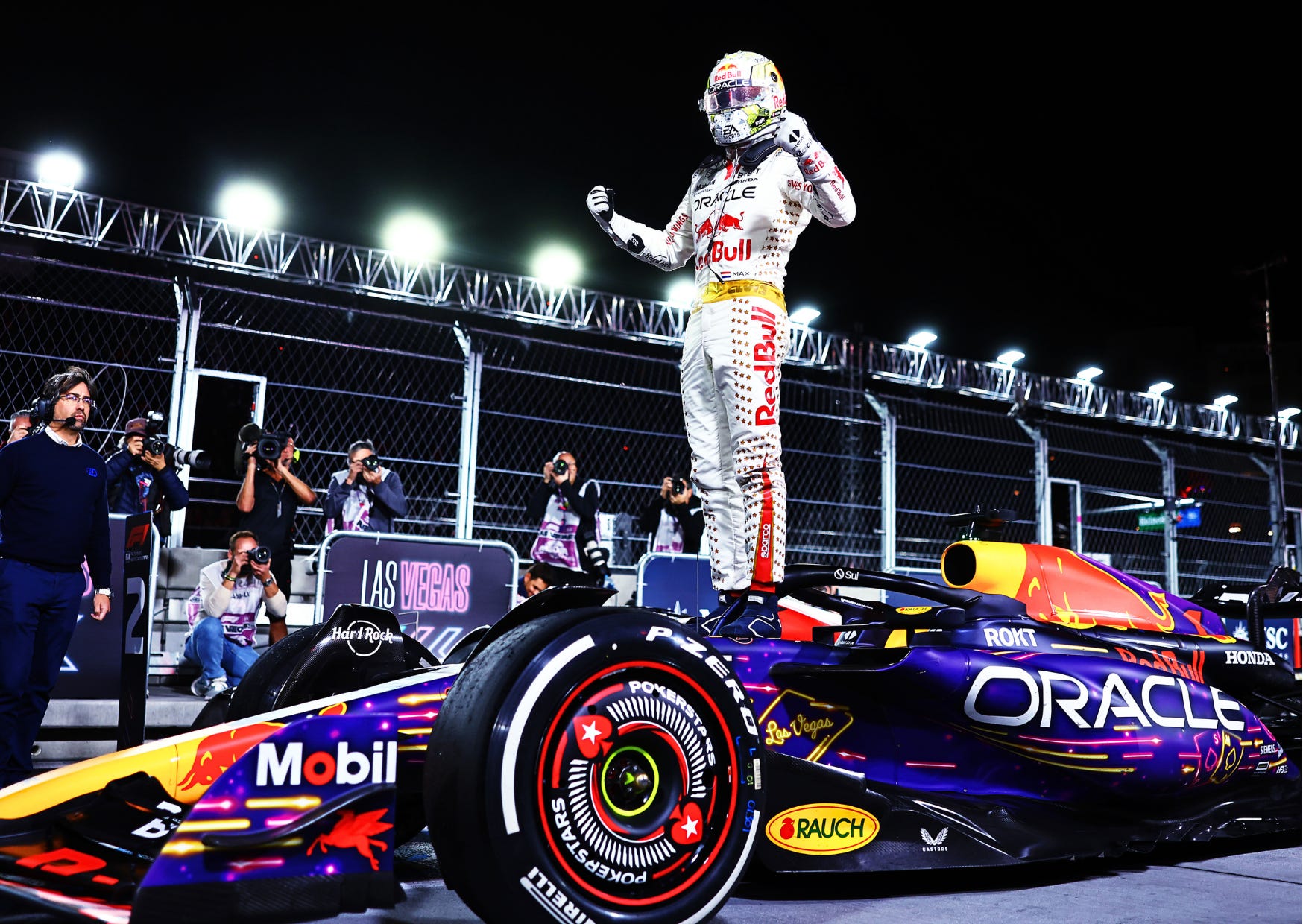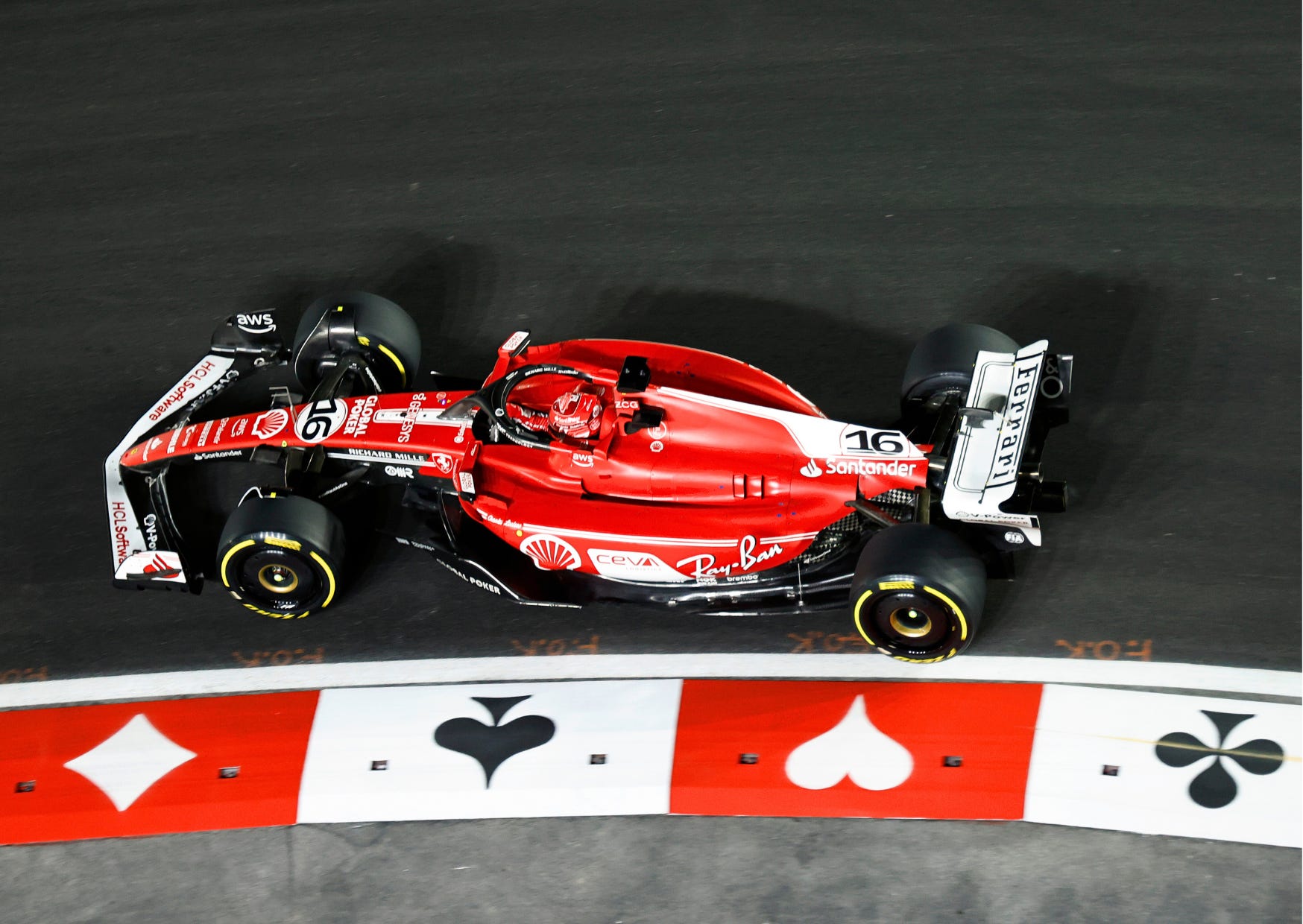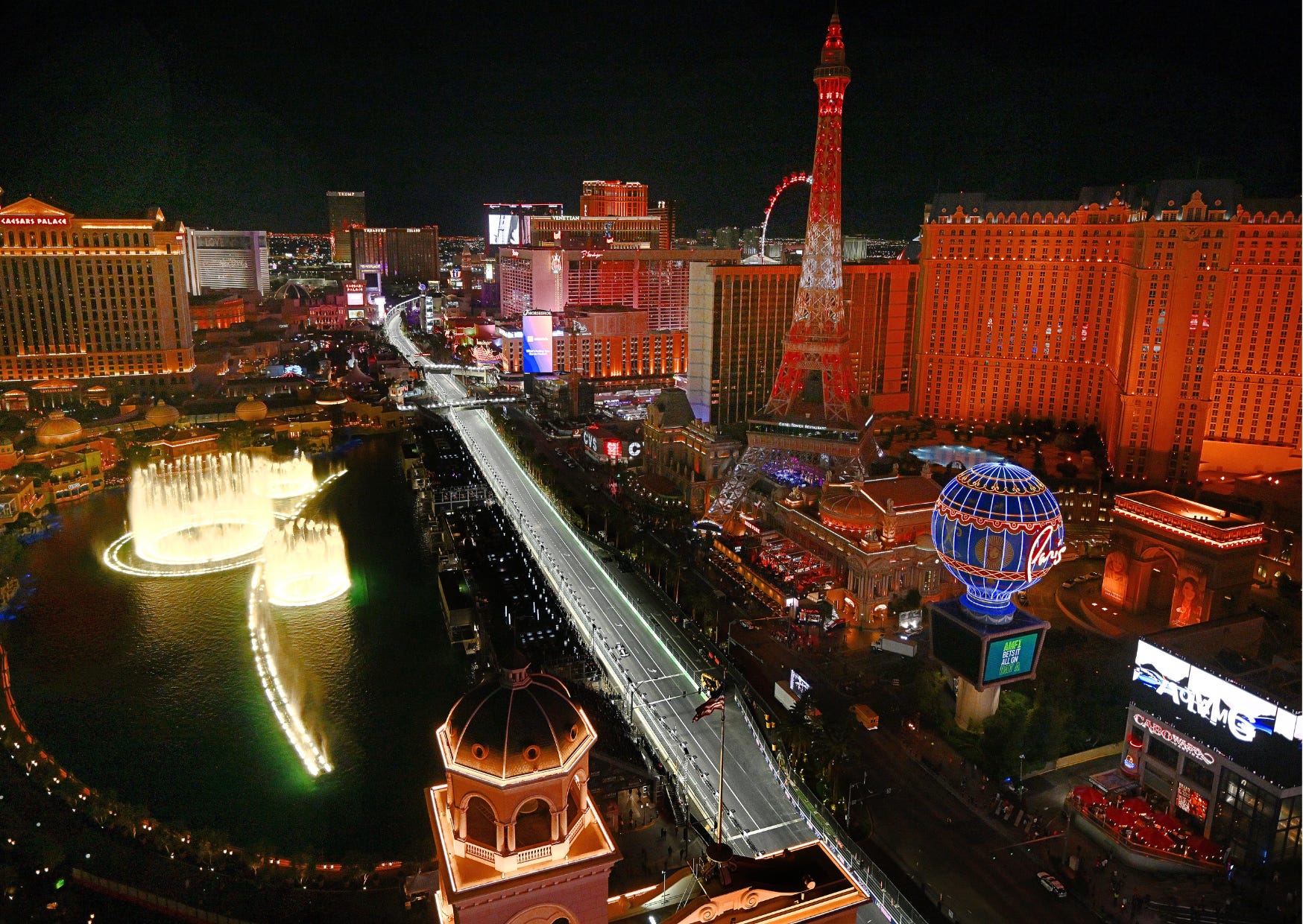How The Las Vegas Grand Prix Became Formula 1’s Most Important Race
It’s not hyperbole to say that last year’s inaugural Las Vegas Grand Prix was one of the most controversial events in Formula 1’s 75-year history. Thousands of locals complained about intensive road work, road closures, traffic, and long commutes. Hotel rooms were going for 2-3x their normal rate despite a massive dip in demand leading up to the race, and there were still over 10,000 unsold tickets remaining just days before the race because Formula 1 priced out its typical fans. Construction workers in Las Vegas also put in 90-hour weeks leading up to the race to ensure everything was done on time. The event ended up being one of the coldest Formula 1 races on record because F1 officials admitted that they didn’t consider temperature when planning the race. And that’s without even mentioning the fact that Formula 1 somehow upset its entire fanbase, as European fans complained that the United States got a third Grand Prix while most American fans on the East Coast were already asleep by the time the race officially started at 1 am on Sunday. If that wasn’t enough to scare off viewers, the weekend’s first practice session ended after just nine minutes when the downforce on Carlos Sainz’s car sucked up a loose drain cover. It then took several hours to repair the track, and F1 didn’t plan for additional security time, so ticketed fans were sent home without seeing any action. However, even with all the negativity surrounding the Las Vegas Grand Prix, the race itself was actually pretty great. There were 181 overtakes, the second most in any race last season. The cars looked incredible as they weaved around the $2.3 billion Las Vegas Sphere, and the event reportedly had an economic impact of $1.5 billion, including $884 million in visitor spending and $77 million in net new tax revenue. But to understand why Formula 1 risked everything to ensure this event was successful, it’s essential to know how the sport actually makes its money. Formula 1 is an asset-light business. They don’t own the teams or the tracks. They also don’t pay driver or engineer salaries, nor do they sell tickets or concessions. Instead, cities all around the world pay Formula 1 — the organization — a fee to host races. These fees range from $20 million annually in a place like Monaco to more than $50 million annually in places like Azerbaijan, Bahrain, Saudi Arabia, and Qatar. Think of this as licensed content. Formula 1 handles all media rights deals and hosting agreements, allowing teams like Ferrari, Mercedes, and Red Bull to run their own businesses, selling sponsorships to offset driver salaries and car development. The promoters who pay Formula 1 a hosting fee can then recoup their money (and potentially make a profit) by handling the event itself. This includes ticket sales, regional sponsorship sales, merchandise sales, hospitality packages, and concerts. Formula 1 has always operated on this model because it allows them to focus on growing a global audience for the sport rather than hiring thousands of employees in each individual market who are exclusively trying to maximize profit on every event. Promoters like it because host fees aren’t prohibitive to them making money. They are guaranteed a certain number of fans at each race because F1 has such a large global audience, and F1 fans tend to have a higher average household income than any other major sports league, allowing promoters to sell expensive hospitality packages. It’s a well-oiled machine at this point. F1 moves around the calendar a little bit here and there, but most of the sport’s promoters have stayed pretty consistent. The audience is also growing much faster than people initially estimated when Liberty Media took over the sport in 2017, primarily because of Netflix and some rule changes. But the same things that have been good for the sport have also created a problem. Huddle Up is a reader-supported publication. To receive new posts and support my work, consider becoming a free or paid subscriber. Liberty Media knows the best way to generate a return for its shareholders is to grow the sport’s American fanbase. The reason for this is that the U.S. has a larger economy than any other country in the world, yet it represents one of F1’s smallest fanbases. So, if Liberty Media markets the sport correctly to American sports fans, they’ll grow the total audience more than any other country, but they’ll also make more money. An excellent example is that the NFL generates more annual revenue ($20 billion) than the world’s top five soccer leagues — Premier League, La Liga, Bundesliga, Serie A, and Ligue 1 — combined despite a significantly smaller global audience. This is why you have seen Formula 1 go from having zero races in the United States in 2010 to three races today. European fans complain about this because their countries tend to care much more about F1 than American fans, but Liberty Media decided to do it anyway because the upside of U.S. growth is a multiple of European growth. There is still plenty of work to be done, but Liberty Media has made a ton of progress. This started when they decided to give the American media rights away to ESPN for free a few years back. There wasn’t a super robust market for the media rights, but F1 definitely could have gotten something in return. However, F1 knew that ESPN would provide them with a bigger platform than anyone else, and if the sport attracted higher viewership numbers, they could sign a much bigger deal just a few years later. That bet ended up paying off when ESPN resigned its media rights deal for nearly $100 million in 2022 — and now Liberty Media has decided to take it a step further. Given there is a theoretical cap on the total number of fans who will ever watch a Formula 1 race, the Las Vegas Grand Prix represented an entirely new business model. Rather than simply licensing its name and content to a race promoter in Las Vegas and allowing them to profit off the sport’s immense growth, Formula 1 decided to promote the inaugural Las Vegas Grand Prix themselves for the first time ever. This was a huge risk, as Formula 1 was no longer just collecting a check. But it also represented a significant upside because if everything went well, they could not only make more money, but it would also serve as a blueprint for future expansion. The other part that doesn’t get discussed enough is that Formula 1 had to invest a ton of up-front money in the project. This included seemingly smaller things like resurfacing the Las Vegas Strip for racing, but it also included much bigger things, like spending $500 million on a permanent 300,000-square-foot paddock building. Formula 1 did this because they were able to secure a 10-year agreement with the city of Las Vegas before the lights even went out on its first race down the strip. And even though there were some hitches in year one, F1’s high-stakes gamble paid off big. The inaugural Las Vegas Grand Prix was one of the world’s biggest sporting events last year, with 315,000 people attending the track over four days. The star-power was off the charts, with celebrities like David Beckham, Rihanna, Justin Beiber, Leonardo DiCaprio, and Michael B. Jordan seen throughout the weekend. And the race even averaged 1.3 million viewers in the U.S. despite its 1 a.m. start time on the East Coast. The race’s financial returns will take a few years to calculate, given how much money Formula 1 invested in year one. But F1 also wasn’t the only one to benefit financially. Las Vegas says the race generated a total economic impact of $1.5 billion. Economists will question this number, of course, but that’s 50% higher than Las Vegas says it saw for the Super Bowl. And the city says Formula 1 fans spent 3.6x more than the typical Las Vegas traveler, staying 4.1 nights and spending over $4,100 on average. The Las Vegas airport was also the second busiest airport in the country the day after the race ended with 2,200 operations. Dealers at the Wynn Hotel split $700,000 in tips on race day, taking home $2,000 each in tips or five to six times more than usual. And MGM’s Chief Financial Officer said on an earnings call that F1 weekend in Las Vegas was the highest-grossing weekend for hotel revenue in the company’s 50-year history, turning the hotel’s historically slowest week of the year on Thanksgiving into its busiest. These highs and lows are sort of to be expected for a new event, especially one as ambitious as shutting down the Las Vegas Strip to race cars 200+ miles per hour. The truth is that no one will ever be 100% happy. Some fans left wanting more, and Clark County commissioner Marilyn Kirkpatrick even threatened to end Formula 1’s 10-year agreement early if they didn’t improve the pre-race construction process. But don’t expect this race to leave the calendar anytime soon. No matter what people say, Formula 1 is committed to turning the Las Vegas Grand Prix into its flagship race. Formula 1 will never self-promote more than a handful of races each year because it’s too big of a logistical challenge, and the promoter relationships are extremely important. However, the Las Vegas Grand Prix has been a success so far, and, more importantly, it’s opened an entirely new revenue stream for the $20 billion company. If you enjoyed this breakdown, share it with your friends. Join my sports business community on Microsoft Teams. Huddle Up is a 3x weekly newsletter that breaks down the business and money behind sports. If you are not a subscriber, sign up and join 125,000+ others who receive it directly in their inbox each week. You’re currently a free subscriber to Huddle Up. For the full experience, upgrade your subscription.
© 2024 |




